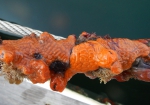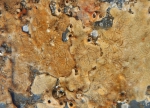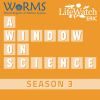World Register of Introduced Marine Species (WRiMS)
Introduction
# alien species: 2,415
# species with uncertain origin: 342
# species with unknown origin: 139
 |
|
|
The World Register of Introduced Marine Species (WRiMS) records which marine species in the World Register of
Marine species (WoRMS) have been introduced deliberately or accidentally by human activities to geographic areas outside their
native range. It excludes species that colonised new locations naturally (so called ‘range extensions’), even if in response to
climate change.
WRiMS notes the origin (source location) of the species at a particular location by country, sea area and/or latitude
longitude as available. If the species is reported to have had ecological or economic impacts it is considered invasive in that
location. Each record is linked to a source publication or specialist database.
A glossary of terminology is available. Links have been provided to species profiles of well-known
marine invasive species in the Global Invasive Species Database
(GISD) of the IUCN Invasive Species Specialist Group
(ISSG).
In using WRiMS, users need to consider possible species misidentifications in the sources, and that for some species it is
uncertain which is their native and introduced ranges. Whether a species is ‘invasive’ can vary between locations and over time
at a particular location.
A fuller description of WRiMS is available in this paper:
Costello, M.J.; Dekeyzer, S.; Galil, B.; Hutchings, P.; Katsanevakis, S.; Pagad, S.; Robinson, T.; Turon, X.; Vandepitte, L.; Vanhoorne, B.; Verfaille, K.; Willan, R.; Rius, M. (2021).
Introducing the World Register of Introduced Marine Species (WRiMS). Management of Biological Invasions 12(4): 792-811. https://dx.doi.org/10.3391/mbi.2021.12.4.02 |
 |
|
|
News WoRMS starring in season 3 of the LifeWatch ERIC podcastAdded on: 2022-07-20 11:44:16 by Tavernier, Annelies The first of a new LifeWatch ERIC podcast series launched today, 20 July 2022, focuses on the Flanders Marine Institute (VLIZ) and the World Register of Marine Species (WoRMS) database. ... Formally introducing: the World Register of Introduced Marine Species (WRiMS)Added on: 2021-12-14 15:19:20 by Dekeyzer, Stefanie In a publication hot off the press, the WRiMS editors and the WoRMS Data Management Team discuss the data sources and history, the data validation, the database structure and software, the data management and the future needs of WRiMS. ...
[Add]
Background of the database
In 2008-2009 the IUCN Invasive Species Specialist Group (ISSG) worked on a project,
within the framework of the Ocean Biodiversity Information System (OBIS), that developed an annotated dataset
of marine introduced and invasive species for the World Register of Marine Species (WoRMS)
in order to flag species on the register as "alien and invasive species".
Both online databases and publications were consulted
with an aim to achieve global coverage. They include:
- Delivering Alien Invasive Species Inventories for Europe (DAISIE)
- Galil, B. (2009). Taking stock: inventory of alien species in the Mediterranean Sea. Biological Invasions 11(2): 359-372.
- Lasram, F.B.R.; Mouillot, D. (2009). Increasing southern invasion enhances congruence between endemic and exotic Mediterranean fish fauna. Biological Invasions 11: 697-711.
- Hayes, K.R. (2005). Marine Species Introductions. Unpublished data from CSIRO.
- Molnar, J.L.; Gamboa, R.L.; Revenga, C.; Spalding, M.D. (2008). Assessing the global threat of invasive species to marine biodiversity. Frontiers in Ecology and the Environment 6(9): 485-492.
In addition to biological status (represented as occurrence, provenance and invasiveness), annotations included higher taxonomy, origin of species,
introduced location, as well as (where available) information on the date of first record/introduction and pathway of introduction.
In 2013-2014, ISSG worked with the Flanders Marine Institute (VLIZ) on a data collection project
developed within the framework of the Biology Project of the European Marine Observation and Data Network
(EMODnet) to complete trait information related to "invasiveness".
The dataset submitted in 2009 was updated using additional data and information from
online databases such as:
- The Global Invasive Species Database (GISD)
- The European Alien Species Information Network (EASIN)
- The Information system on Aquatic Non-indigenous Species (AquaNIS)
- The National Exotic Marine and Estuarine Species Information System (NEMESIS)
- and (recently) published literature
The terminology and definitions
to describe occurrence, provenance and invasiveness have been revised and expanded.
Additionally, any available information on abundance, pathways of introduction and spread,
evidence of impacts on biodiversity were documented. The geographic coverage of this dataset is global. Focus was placed on
documenting authoritative information on marine species introductions in the recognized
marine bio-invasion hotspots.
Editorial team
- Ahyong, Shane: Thematic editor: Lithodoidea, Thematic editor: Polychelida, Thematic editor: Stomatopoda
- Bieler, Rüdiger: Thematic editor: Mollusca
- Boudouresque, Charles-François: Thematic editor: Biota (Macroalgae)
- Carvalho, Susana: Thematic editor: Biota (Sponsor for external WRiMS consultant 2024-2025)
- Desiderato, Andrea: Thematic editor: Amphipoda (Mediterranean)
- Downey, Rachel: Thematic editor: Porifera
- Galil, Bella Sarah: Thematic editor: Biota (Mediterranean)
- Hutchings, Pat: Thematic editor: Polychaeta
- Kamburska, Lyudmila: Thematic editor: Copepoda, Thematic editor: Ctenophora
- Katsanevakis, Stelios: Thematic editor: Biota (Europe, Mediterranean)
- Kupriyanova, Elena: Thematic editor: Polychaeta
- Lejeusne, Christophe: Thematic editor: Ascidia, Thematic editor: Decapoda, Thematic editor: Mysida (Mediterranean and European Atlantic)
- Ma, Kevin C. K.: Thematic editor: Biota (North America)
- Occhipinti, Anna: Thematic editor: Biota (Mediterranean)
- Pino, Loreto: Thematic editor: Biota (WRiMS consultant 2024-2025)
- Poore, Gary C.B.: Thematic editor: Anthuroidea, Thematic editor: Isopoda
- Rewicz, Tomasz: Thematic editor: Amphipoda (Ponto-Caspian region)
- Rius, Marc: Thematic editor: Ascidiacea
- Robinson, Tamara B.: Thematic editor: Biota (Southern Africa)
- Sobczyk, Robert: Thematic editor: Polychaeta
- Stępień, Anna: Thematic editor: Tanaidacea
- Turon, Xavier: Thematic editor: Ascidiacea, Thematic editor: Bryozoa
- Verleye, Thomas: Thematic editor: Biota (Belgium)
- Vieira, Leandro M.: Thematic editor: Biota
- Zhan, Aibin: Thematic editor: Biota (China)
CitationUsage of data from the World Register of Introduced Marine Species in scientific publications should be acknowledged by citing as follows:
- Costello, M. J.; Ahyong, S.; Bieler, R.; Boudouresque, C.; Desiderato, A.; Downey, R.; Galil, B. S.; Gollasch, S.; Hutchings, P.; Kamburska, L.; Katsanevakis, S.; Kupriyanova, E.; Lejeusne, C.; Ma, K. C. K.; Marchini, A.; Occhipinti, A.; Pagad, S.; Pino, L.; Poore, G. C. B.; Rewicz, T.; Rius, M.; Robinson, T. B.; Sobczyk, R.; Stępień, A.; Turon, X.; Valls Domedel, G.; Verleye, T.; Vieira, L. M.; Willan, R. C.; Zhan, A. (2025). World Register of Introduced Marine Species (WRiMS). Accessed at https://www.marinespecies.org/introduced on 2025-12-26. doi:10.14284/347
If the data from the World Register of Introduced Marine Species constitute a substantial proportion of the records used in analyses, the chief editor(s) of the database should be contacted. There may be additional data which may prove valuable to such analyses.
Individual pages are individually authored and dated. These can be cited separately: the proper citation is provided at the bottom of each page.
Download
To request a copy of the WRiMS database, please go to our download request page. A download is by default limited to taxonomic data. If you are
also interested in the distributions of WRiMS, please specify so in the field "Detailed information on the planned usage".
Acknowledgements
WRiMS came about through funding from the University of Auckland, Census of Marine Life’s OBIS funding, EMODnet Biology (to Mark Costello) and LifeWatch Belgium (from VLIZ).
We acknowledge the Research Foundation Flanders who as part of the Belgian contribution to LifeWatch provided funding to organise the second WRiMS workshop held at VLIZ, in Oostende, Belgium, during the 23rd - 25th of April 2018.
We thank Dr Keith Hayes for providing valuable datasets on introduced marine species, including annotations on pathways, vectors and impacts.
Wim Decock and Stefanie Dekeyzer of VLIZ assisted database development.
We thank the former editors John Dolan, Stephan Gollasch, Keith Hayes, Christophe Lejeusne, Agnese Marchini, Shyama Pagad, Vadim E. Panov, Roderick Randall, Nestor M. Robinson, Nir Stern, Wolfgang Sterrer, Georgina Valls Domedel, Richard C. Willan, Lian Wong, and Darren Yeo Chong Jinn.
Image credits
Banner: From left to right:
Asterias amurensis - Northern Pacific seastar (Photo by: Lycoo - Wikimedia Commons);
Ciona intestinalis - Sea squirt (Photo by: perezoso - Wikemedia Commons);
Pterois volitans - Indo-Pacific Lionfish (Photo by: Jens Petersen - Wikimedia Commons);
Tubastraea coccinea - Orange cup coral (Photo by: Nick Hobgood - Wikimedia Commons).
Introduction:
Top: Botrylloides violaceus, Woods Hole (Photo by Rosana Moreira da Rocha, Universidade Federal do Paraná, Brazil).
Bottom: Didemnum vexilum on experimental plates, Woods Hole (Photo by Rosana Moreira da Rocha, Universidade Federal do Paraná, Brazil)
|











